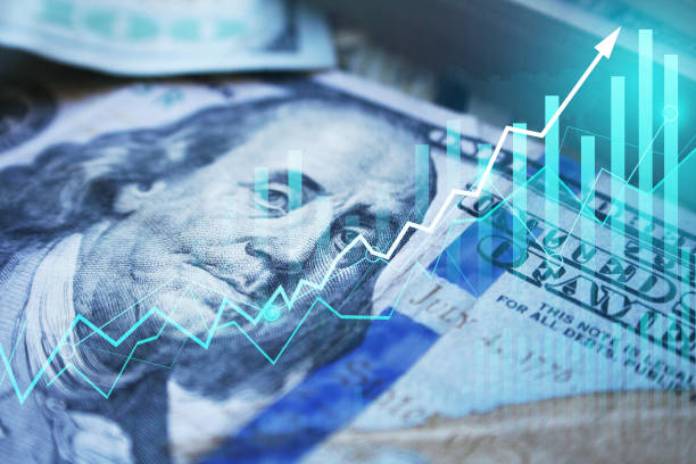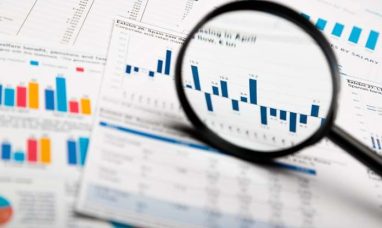Bank of America Corporation (NYSE:BAC) reported its second-quarter earnings earlier today. Both revenue and earnings were slightly lower than expected in the announcement. Revenue was 22.7 billion, a 6% increase yearly, but earnings were 6.2 billion, a 32% decrease.
The increase in provisions for credit losses (“PCLs”) accounted for a large portion of the fall in net income. Regulations require banks to set aside a particular amount of money to maintain their capital ratios to cover losses. This causes some variation in earnings. This year, we are largely expected to enter a recession, and banks like BAC (NYSE:BAC) are being forced to boost their PCLs to cover probable defaults. BAC’s reserve increase for the second quarter was $523 million, significantly reducing net income.
Bank of America Second Quarter Earnings
BAC earned $9.2 billion in the second quarter of 2021. If you add $523 million to the most recent quarter’s earnings, you get $6.723 billion, a 26% decrease. However, without the reserve build, earnings growth would have remained negative. Income taxes were raised, and investment banking fees were kept low. On the other hand, stock buybacks helped mitigate negative growth on a per share basis since EPS fell 29%, less than net income.
Overall, it wasn’t an awful quarter. Although profits dropped, much of the decline was due to an “on paper” decline caused by higher PCL and the previous year’s income tax advantage. Meanwhile, the Federal Reserve is boosting interest rates, which might benefit BAC if the current yield curve inversion disappears. As a result, I believe Bank of America (NYSE:BAC) is a smart buy at current prices, as I’ll discuss in more depth in the following paragraphs.
One of the major benefits of BAC over other banks is its operational diversity. Bank of America provides retail, commercial, brokerage, and investment banking services. This is a diverse group of companies with strong potential.
Some of the trends this year are really beneficial to lenders. Higher interest rates are an example. Banks borrow towards the bottom of the yield curve and lend near the top. As a result, banks receive bigger margins when interest rates rise in tandem across the yield curve. This year, interest rates have not risen in lockstep; instead, the yield curve has inverted. Due to that, we haven’t seen a significant increase in net interest income. If the yield curve situation changes, BAC’s future profits could increase.
Investment banking is in a worse situation than retail banking. A bank that only performs investment banking will struggle this year because the tech IPO market has dried up. Last year, tech IPOs were a significant money-spinner for banks, but there aren’t as many of them this year. As a result, many large banks’ revenue is declining.
Banks with a high concentration in i-banking are performing much worse than lenders this year. Goldman Sachs (GS) announced earnings around the same time as BAC, recording a 23% fall in sales, compared to a 6% increase for Bank of America. GS’s investment banking revenue plummeted 41% more than the overall enterprise revenue.
As can be seen, BAC (NYSE:BAC) has the least exposure to investment banking of the three banks. As previously stated, these banks do not report investment banking as a separate category. They only disclose investment banking fees in combined segment results; they do not publish i-banking margins separately. However, looking at “investment banking fees as a percentage of revenue” yields a similar result. In 2021, JP Morgan earned $13.4 billion in investment banking fees on $121 billion in total revenue. The same year, Bank of America earned $8.9 billion in investment banking fees on $89.11 billion in total revenue. So, JP Morgan is 11% i-banking, whereas Bank of America is merely 10%.
We may also perform a discounted cash flow analysis to determine the value of BAC. Assuming a five-year growth rate of 5%, followed by a five-year growth rate of 0%, and a ten-year discount rate, we get a fair value of $43 for BAC. If we assume no first phase of growth, we get a fair value of $35, which is still slightly higher than the current price! In the most recent quarter, BAC earned $3.51 per share.
All of these hazards are significant enough for investors to take into account. They do not, however, undermine the positive argument on BAC. The stock is inexpensive enough that it could thrive even if the economy continues to deteriorate. However, investors should be patient because the current economic downturn will take some time to resolve.
Featured Image: DepositPhotos © Darren415

















